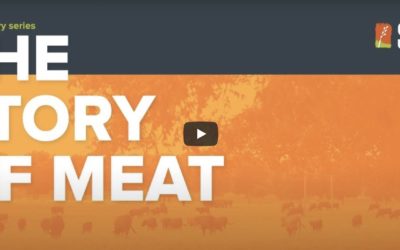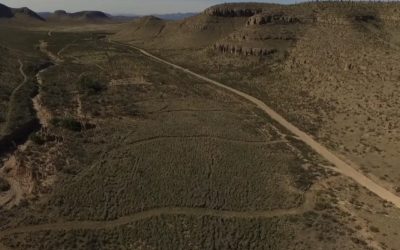‘Oh, I’ll Keep ‘em Out’
Quoting the article below, “Buying a house in cattle country and complaining about cattle is like buying a house in a nudist colony and complaining that people don’t wear clothes.”
NOTE: this article was originally published to PERC.com’s Winter 2021 Newsletter (Volume 40). It was written by Sara Sutherland and Eric Edwards.
Good fences make good ranchers
This special edition of PERC Reports uses the hit television show “Yellowstone’s” portrayals of the Rocky Mountain West to examine real-world western issues. Explore the full issue here.
In Season 3 of “Yellowstone” (Episode 6), a squabble hashed out at a barbed wire fence has the air of childhood spats over siblings crossing “the line” into each other’s space. “I don’t want to see them things on our side of the fence,” Kayce Dutton tells Wade Morrow, who’s been enlisted to wrangle domestic bison on the resort property next to the Yellowstone Dutton Ranch. The ex-criminal Morrow is spoiling for a fight with the Duttons, and his latest ploy is to allow the bison to damage the fence separating the properties.
When Kayce, the current Montana Livestock Commissioner, instructs Morrow to keep the bison out of the Duttons’ property, Morrow snaps back: “It’s your job to keep ‘em from getting out. You should know that, commissioner.”
“Oh, I’ll keep ‘em out,” Kayce responds. “But you’re gonna f—ing hate the way I do it.”
Although Morrow is a convicted criminal, he does possess enough knowledge of Montana range law to be dangerous—but he is mistaken about one important detail about bison.
Fence In or Fence Out?
Montana is what is known as a fence-out state, which means that in areas with open range, ranchers are under no legal obligation to prevent herds from meandering across property boundaries. Instead, landowners who want to keep cattle or horses off their land must build a fence themselves.
In the late 1990s in Montana’s Gallatin Valley, a fence dispute involving cattle arose as new owners of 20-acre ranchettes began to complain about cattle destroying their landscaping and muddying their yards. At the time, Gallatin County Commissioner Bill Murdock summarized Montana range law as follows: “If they don’t want cattle in there, they should fence them out or move into one of those clustered developments that we call town.”
The differences between rights to land in the city versus the country illustrate the complexity of property institutions and the ways in which they can evolve to address specific resource management challenges. Economists and legal scholars often compare property rights to a bundle of sticks. A property right is a complicated bundle of privileges or obligations, with sticks added or subtracted in different settings.
In a city, property ownership comes with the benefit that no neighbor can allow their cattle to roam onto your lawn without your permission. You also have an obligation: You cannot let your cattle roam—or more likely in many places, you are not allowed to own even a single cow.
Montana is what is known as a fence-out state, which means that in areas with open range, ranchers are under no legal obligation to prevent herds from meandering across property boundaries. Instead, landowners who want to keep cattle or horses off their land must build a fence themselves.
A homeowner in the rural countryside has a different bundle of rights and privileges. They can own cattle if they want, but their property right does not extend to preventing others’ cattle from roaming their land. Fence or not, if a cow from a neighboring ranch tramples their garden, the rancher owes the homeowner no compensation.
The costs and benefits of rigidly monitoring and enforcing property boundaries help explain why the bundles of rights differ. In a city, land is valuable, and citizens live in close proximity. It really matters if your neighbor’s fence is five feet on your side of the boundary. Homebuyers will often purchase surveys of their land to find out down to a few inches where their property boundaries lie.
In ranching country, where estates are larger and land sells for a fraction per acre of what it does in the city, the costs of enforcing strict property boundaries often exceed the benefits. Ensuring cows are always where they’re supposed to be—building fences, monitoring for wayward animals, and fixing holes—is expensive, and the damage from an occasional stray animal is small.

A rancher runs a temporary fence line. ©USDA NRCS Montana
This calculus changes as the perceived costs and benefits shift, as it can for different types of livestock. In the aforementioned episode of “Yellowstone,” a key detail is that it is bison, not cattle, on Morrow’s side of the fence. Montana’s open range laws apply only to horses and cattle. Other livestock, including domestic bison, must be fenced in.
This aspect of the law has become relevant as more ranchers raise bison as a form of livestock. Bison can transmit a disease called brucellosis to cattle, which causes cows to abort calves, leads to fertility issues, and decreases milk production. Because ranchers perceive a great cost of bison straying onto their land due to the risk of disease transmission, there is great potential for conflict over fencing. As a result, Montana fence law has evolved to treat domestic bison differently than other livestock.
A Field to Study
Western fence law would appear to be an esoteric subject. A great deal of academic research, however, has examined fence liability laws because they provide a simple illustration of fundamental issues in law and economics. In his Nobel Prize-winning work on property rights, economist Ronald Coase used a fence, rancher, and farmer to illustrate that creating and assigning property rights to the liability for cattle damage, whether to the rancher or farmer, leads to an efficient outcome as long as the costs of transacting between the two parties are low. In a fence-in state, the rancher is liable for damages from his herd. If those potential damages exceed the cost of building a fence, the rancher has an incentive to build a fence. If the cost of the fence is high relative to the damages his wandering cattle might cause, he would simply compensate the farmer for the damages. Conversely, in a fence-out state like Montana, the farmer is liable for any damages caused by the rancher’s rogue cattle. If his damages exceed the cost of a fence, he builds it. If not, he simply allows the cattle to meander.
In both cases the outcome—whether a fence gets built—is identical. The cost of the fence, not the liability rule, determines the outcome. In discussing fences, Coase was making a broader argument that transaction costs, not liability rules, are the fundamental cause of inefficient outcomes.
Transaction costs are the costs associated with defining, enforcing, and trading property rights or writing contracts. In the farmer-rancher example, potential transaction costs include building a fence, monitoring the boundary, and writing a contract to allow the rancher to pay for damages.

©USDA NRCS Montana
Transaction costs include the costs of monitoring and enforcing property rights. When fencing is expensive, farmers may be reluctant to grow crops near property boundaries. The invention of barbed wire, which solved the problem of cattle easily pushing over straight wire fences, offers an example of the role of technology in lowering the costs of enforcing property rights.
As barbed wire was introduced across the Great Plains from 1880 to 1900, landowners gained access to a cheaper method of keeping cattle off their land. Subsequently, agricultural investment increased, and aggregate land values grew by about 1 percent of U.S. gross domestic product.
When transaction costs are high, however, the initial assignment of property rights can matter. In these cases, the preferred legal rule is one that assigns liability to minimize the effect of transaction costs. To adjust the assignment of liability, property rights may need to be modified.
Another economist, Harold Demsetz, observed that property rights institutions are modified to address new benefit-cost possibilities. Consistent with this hypothesis, in Montana, if a majority of landowners agrees, it can create a herd district to reverse liability and change an area to fence-in. Such a change might be sought, for example, where grain production is the dominant land use.
More than the range law itself, the lack of trust between neighbors and an inadequate knowledge of ranching culture by newcomers appears to have driven the Gallatin Valley fence dispute of the 1990s.
The legal scholar Robert Ellickson studied fence laws in Shasta County, California, where a quirk in the law allowed for ongoing reversals of liability. His important academic discovery is probably obvious to any rancher: Fences are less about legal liability and more about neighborly cooperation.
Ranchers interact with the same neighbors on a variety of issues. Cooperation on fencing is similar to the interactions of users of a common pool resource, where the work of Nobel Laureate Elinor Ostrom is relevant. She emphasized how local communities managing a common resource with high levels of trust can develop either formal or informal mechanisms to deal with issues around access and use.
This “third way” of managing natural resources can get around the high transaction costs of formally defining and enforcing strict resource access rules. On large ranches, miles of fence and interacting livestock make it prohibitively expensive to ensure cattle stay where they should. If neighboring ranchers trust each other to obey norms of proper herd management and return stray animals, effective management can occur at low cost.
Culture Clash
Returning to the Gallatin Valley fence dispute of the ‘90s, culture, social norms, and trust played key roles. Ranchette owners, often newcomers from out of state, were usually viewed with distrust, and they did not understand the legal or social aspects of open range.
More than the range law itself, the lack of trust between neighbors and an inadequate knowledge of ranching culture by newcomers appears to have driven the dispute. Warren McMillan, the neighboring rancher, summarized the issue pithily, as quoted in a High Country News story at the time: “Buying a house in cattle country and complaining about cattle is like buying a house in a nudist colony and complaining that people don’t wear clothes.”
The cooperation and social norms that generally go hand in hand with managing livestock are why we only hear about fence laws on rare occasions—and perhaps why conflict over them makes for an absorbing storyline on “Yellowstone.”



